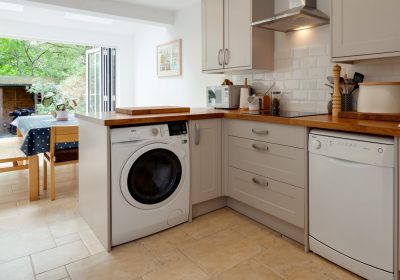
(翻譯內容以英文版本為準)
2008 年 4 月 26 日,還是高中生的我出席了一個由香港管弦樂團舉辦的音樂會 BRAVO! RUSSIA。那場演奏毫不起眼:雖然鋼琴家道格拉斯(Barry Douglas)將拉赫曼尼諾夫的「第 3 鋼琴協奏曲」演繹得惟肖惟妙,但指揮家胡薩(Jakub Hrůša)的表現則未如理想。胡薩的演繹令人難以信服,一舉手、一投足都了無自信,毫不自然。在我看來,他根本沒有能力在台上贏得那些普通樂手的尊重。離場時我還在想,對於當時 27 歲的胡薩來說,要指揮一支頂級管弦樂隊,可謂天方夜譚。
3 年後,在 2011 年 7 月 30 日,我出席了一場 BBC 的「逍遙音樂會」,演出者是伯明翰市立交響樂團(City of Birmingham Symphony Orchestra)以及他們的首席指揮兼音樂總監尼爾森斯(Andris Nelsons)。安坐在皇家阿爾伯特音樂廳(Royal Albert Hall)的我無法相信眼前所見:一位指揮家猶如耍雜演員般在台上跳躍、瘋狂地揮手,擺弄出各種奇異的肢體動作。我盡可能憋住笑聲,認為台上這位 32 歲的指揮家簡直是個天大的笑話。
在那天後,我沒有再次觀看這兩位指揮的現場演奏。但在 2018/2019 年度,當我居於柏林時,我卻對這兩位指揮家完全改觀了!
在 2008 年後,胡薩不斷進步,並把自己變成這個年代裡其中一位最鼓舞人心及表現華麗的指揮家之一。11 年前的無名小卒,如今竟一躍而上,成為首屈一指的班堡交響樂團(Bamberg Symphony Orchestra)的首席指揮、愛樂管弦樂團(Philharmonia Orchestra in London)及捷克愛樂樂團(The Czech Philharmonic Orchestra)首席客席指揮,更曾擔任格林德伯恩(Glyndebourne)歌劇巡演的音樂總監,亦錄製過不少在商業上取得成功,廣受讚譽的錄音。
過去一年,我去過兩次他的演奏會。一次是 2018 年 10 月他與柏林愛樂樂團合作的一場全捷克節目(亦是他與此樂團的首次合作),另一次是他與同樣享負盛名的柏林德意志交響樂團合作演出馬勒「第 6 交響曲」。胡薩的指揮展示出他對演出作品的深入理解,帶出音樂的訊息與曼妙。他將質感與情感戲劇性地結合於一起,確保管弦樂隊奏出華美的音調,同時樹立不可抗拒的氣勢。
我自 2011 年開始在 YouTube 觀看尼爾森斯的演出,當中最令我驚艷的不是奏出的音樂,而是其他古典音樂愛好者在留言欄裡的討論。大部分留言都是關於尼爾森斯仿如小丑般的荒唐肢體動作,以及樂手們何以能理解他的指揮。有時候,我的確認同這些留言者;但過去一個樂季看過兩遍他與柏林愛樂樂團的演出後,我永遠不會再批評這會拉脫維亞籍的指揮家。
他所演繹馬勒的第 2 交響曲「復活」及蕭士塔高維奇的第 11 交響曲「1905 年」絕對是驚為天人。前者雄偉、深刻而神奇,後者則全面地刻劃出作曲家希望展示出的恐懼。不少指揮只專注於樂曲裡的陰險與諷刺,但尼爾森斯更描繪出 1905 年俄國革命的絕望與挫敗感。在演奏過程中,我一直坐在座位的邊緣,浸沉在尼爾森斯營造的不安氣氛之中,這一切都拜他的指揮功力所賜。
無庸置疑的,是尼爾森斯一直保持他戲劇性的風格來指揮,像一個不安分的六歲兒童在台上跳舞。然而,我開始明白他誇張的動作其實無傷大雅,真正重要的是他成功營造出演奏廳內的氣氛。有好幾次我實在無法忍受他的指揮而閉上眼睛。在不用看著他誇張的肢體動作下,我更能享受尼爾森斯所創造的音樂。事實上,他的演出不僅僅是一場演奏,而是激奮人心的戲劇。
現在,尼爾森斯是著名的萊比錫布業大廳管弦樂團以及波士頓交響樂團的音樂總監,在國際間受到熱烈的讚揚。事實上,他是 2015 年在柏林愛樂樂團接替西蒙歷圖爵士的熱門候選人之一,可見樂手對他的評價何高。
主流意見通常認為指揮家在 60 至 70 多歲才會達到音樂生涯頂峰,但胡薩只得37 歲,而尼爾森斯也年僅 40。我無法想像在接下來的年華,他們在古典音樂界的影響力與魅力會達到何種境地。
Conductors’ Metamorphoses

On April 26th, 2008, back when I was still a high school student, I attended a concert of the Hong Kong Philharmonic Orchestra in the Cultural Centre. That concert was most unremarkable – although soloist Barry Douglas gave a fine performance of Rachmaninov’s Third Piano Concerto, conductor Jakub Hrůša was simply not good enough. Hrůša’s interpretations were unconvincing, his down beats wobbly, his body language unconfident, his movements unnatural… Indeed, he was simply unable to command the respect of the mediocre players on stage. I remembered leaving that concert thinking to myself it would take a miracle for Hrůša, 27 at the time, to ever conduct a top orchestra.
Some three years later, on July 30th, 2011, I was at a BBC Proms concert, featuring the City of Birmingham Symphony Orchestra and their Principal Conductor/Music Director Andris Nelsons. I was sitting in a box in the Royal Albert Hall, and could not believe what I saw – a conductor jumping around, waving his hands crazily, and making all sorts of over-the-top silly movements, as if he was a member of the circus. I tried very hard not to burst out laughing and thought that this 32-year-old conductor was an utter joke.
I did not have the displeasure to attend either of these conductor’s laughable live performances again until 2018, when I began my visiting scholar residency in Berlin. And boy did my impression on both of these conductors change completely!
I have cast aside Hrůša after his frankly awful guest appearance in Hong Kong in 2008, but since then this Czech conductor has established himself as one of the most exciting, inspiring and flamboyant conductors of our generation. He was almost an unknown musician eleven years ago, but he can now boast being the Chief Conductor of the outstanding Bamberg Symphony Orchestra and the Principal Guest Conductors of the Philharmonia Orchestra in London and the Czech Philharmonic Orchestra, having been the Music Director the Glyndebourne Touring Opera earlier in this decade and recorded a number of commercially successful and critically acclaimed recordings.
I attended two of his concerts in Berlin over the past year – namely his début with the Berlin Philharmonic in October 2018 with a thrilling all-Czech programme, as well as his performance of Mahler’s Sixth Symphony with the Deutsches Symphonie-Orchester Berlin, another noted ensemble in the German capital. Hrůša demonstrated a deep philosophical understanding of the pieces he conducted, dispatching all the music with transparency, well thought-out phrasing and pure symphonic beauty. He dramatically married textures and emotions, ensured that the orchestras produce a sumptuous delicacy of tone and established an irresistible momentum in all the pieces performed.
It is extremely rare for a conductor to be immediately re-invited in the following season, having just made his first appearance with the Berlin Philharmonic. This, however, is exactly the case with Hrůša, which is testament to how highly the musicians of the world’s premier orchestra rated him.
Since 2011, I have watched some of Andris Nelsons’ performances on YouTube, and what fascinated me most was often not the music, but the discussions of other classical music aficionados in the comments’ section. Most of the comments related to Nelsons’ clown-like, theatrical and ludicrous body movements and how the orchestral musicians could possibly understand his conducting. On occasions, I agreed with those comments but having watched his performances with the Berlin Philharmonic twice this season, I would no longer criticise this Latvian conductor.
His interpretations of Mahler’s Second Symphony (Resurrection) and Shostakovich’s Eleventh Symphony (The Year 1905) were quite simply out of this world. The former was majestic, profound and magical, while the latter comprehensively depicted the horror and fear the composer intended. There were numerous pulsating flashes of sinister and sardonic malice, and Nelsons showed the desperate frustration of the 1905 Russian Revolution with aplomb. I was kept on the edge of my seat throughout this programmatic symphony, and could feel a disturbed, uneasy and frightening atmosphere in the concert hall, all created by Nelsons’ brilliance and faithfulness to the score.
There was no doubt that Nelsons has kept his dramatic conducting style – his actions were still over the top, and he danced on the rostrum like a restless six-year-old. However, I have come to realise that it really didn’t matter what he behaved like. What mattered was the music he produced and the atmosphere he created. There were times that I simply couldn’t bear to watch his conducting, but once I closed my eyes, free from watching his theatrics, I was simply amazed by the music that Nelsons produced. In truth, it was not just music. It was scintillating drama, electrifying theatre, and pure excitement.
Nelsons is now the Music Director of two of the greatest and most long-established orchestras in the world – the Leipzig Gewandhaus Orchestra and the Boston Symphony Orchestra – and receives raving reviews across the globe. Indeed, he was one of the leading candidates to succeed Sir Simon Rattle at the Berlin Philharmonic back in 2015. Put simply, you just won’t get these honours if you are not one of the finest and most popular conductors in the world.
It’s widely recognised that conductors do not peak until they are in their 60s or 70s. Hrůša is just 37 now, and Nelson a mere 40. I cannot begin to imagine how successful, influential and dominant they would be in the classical music world in the years to come.














